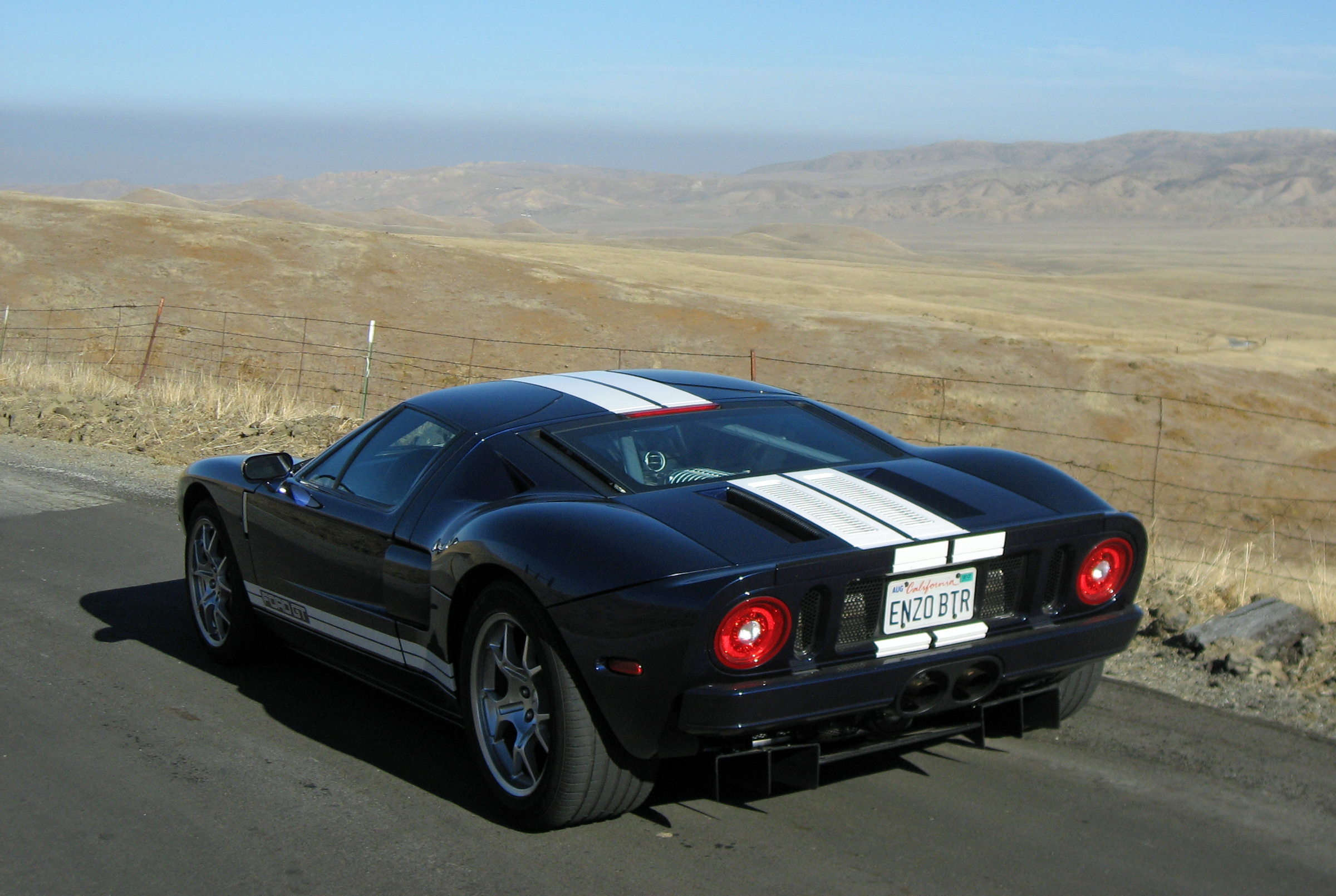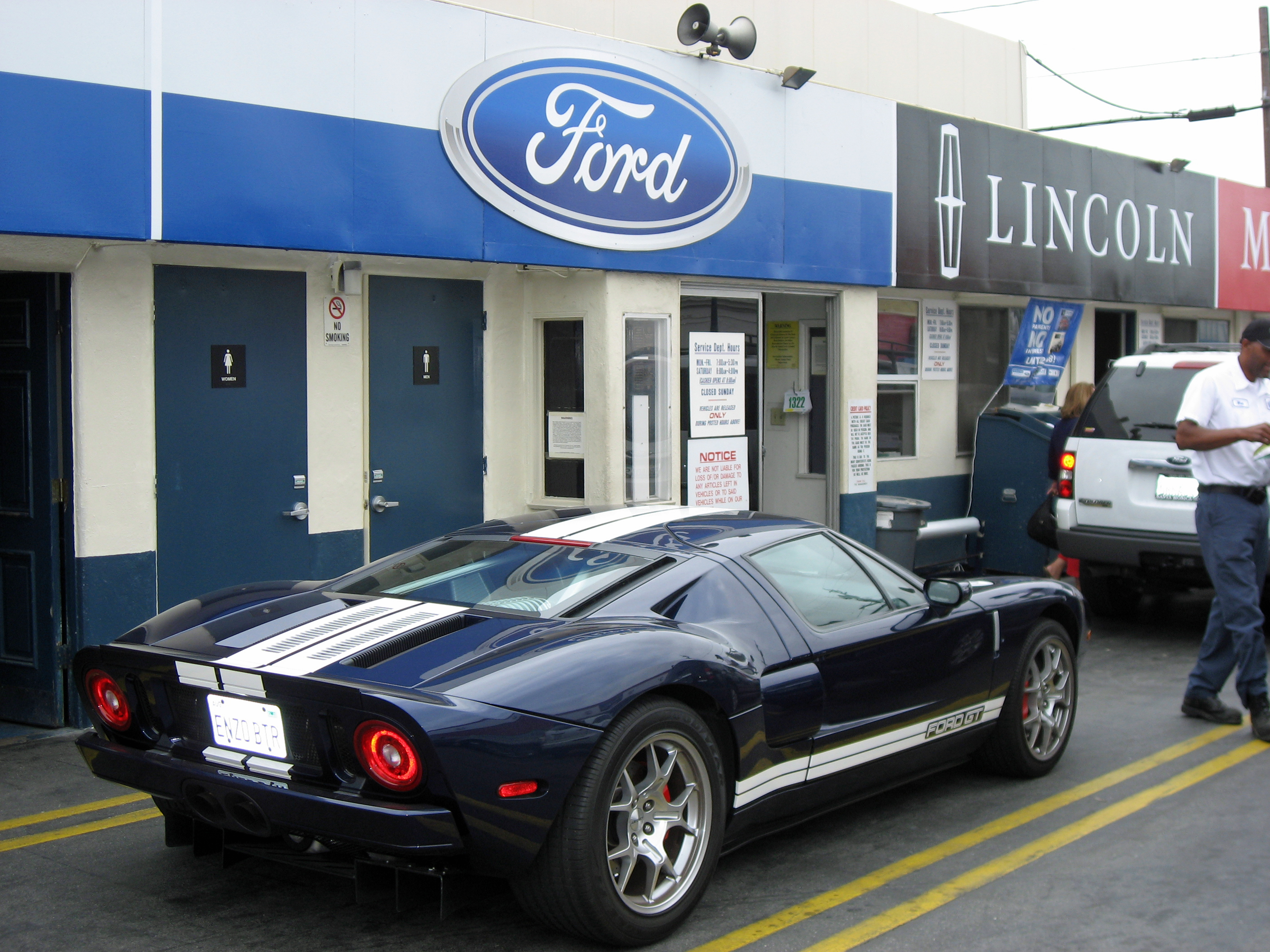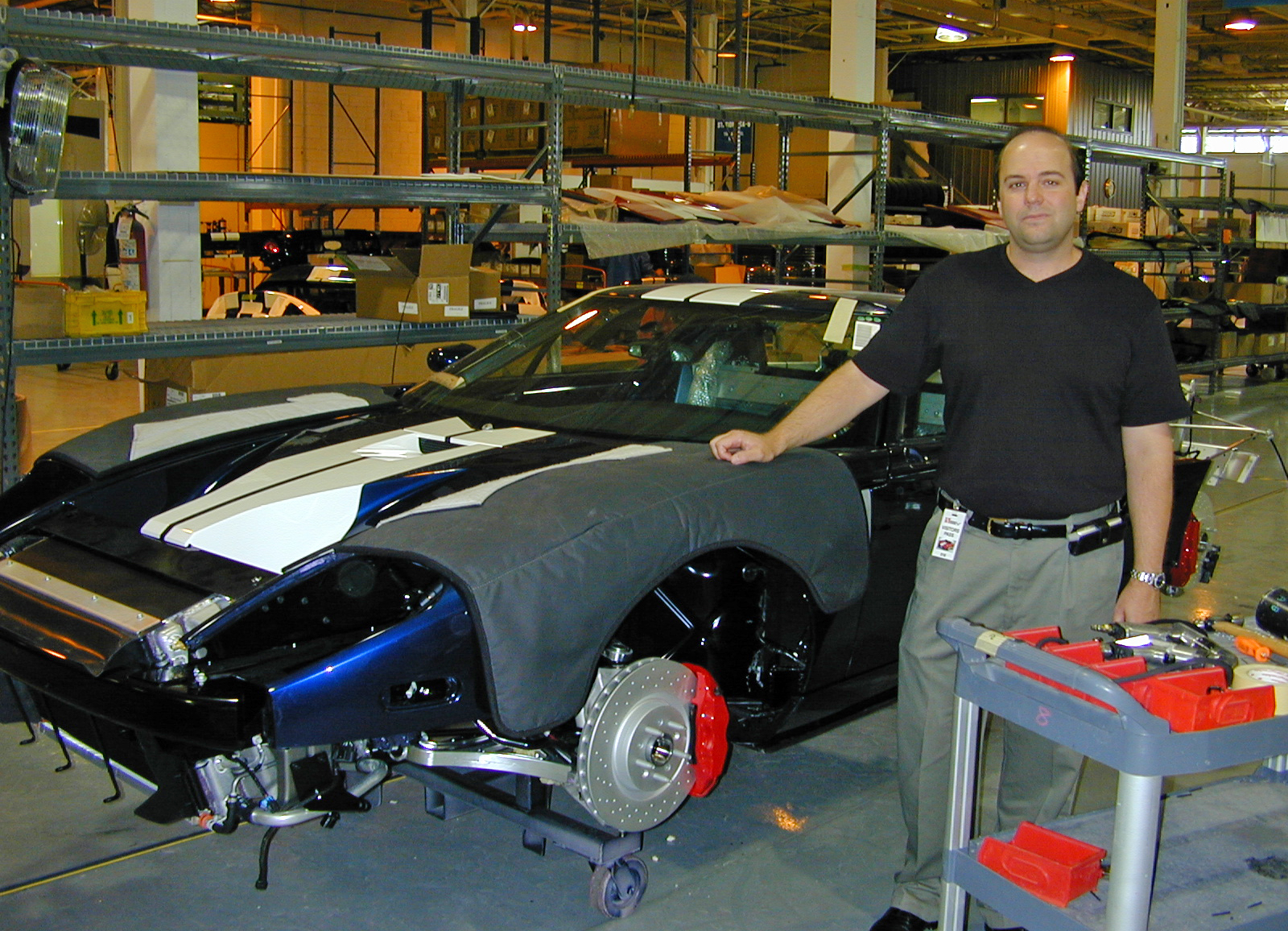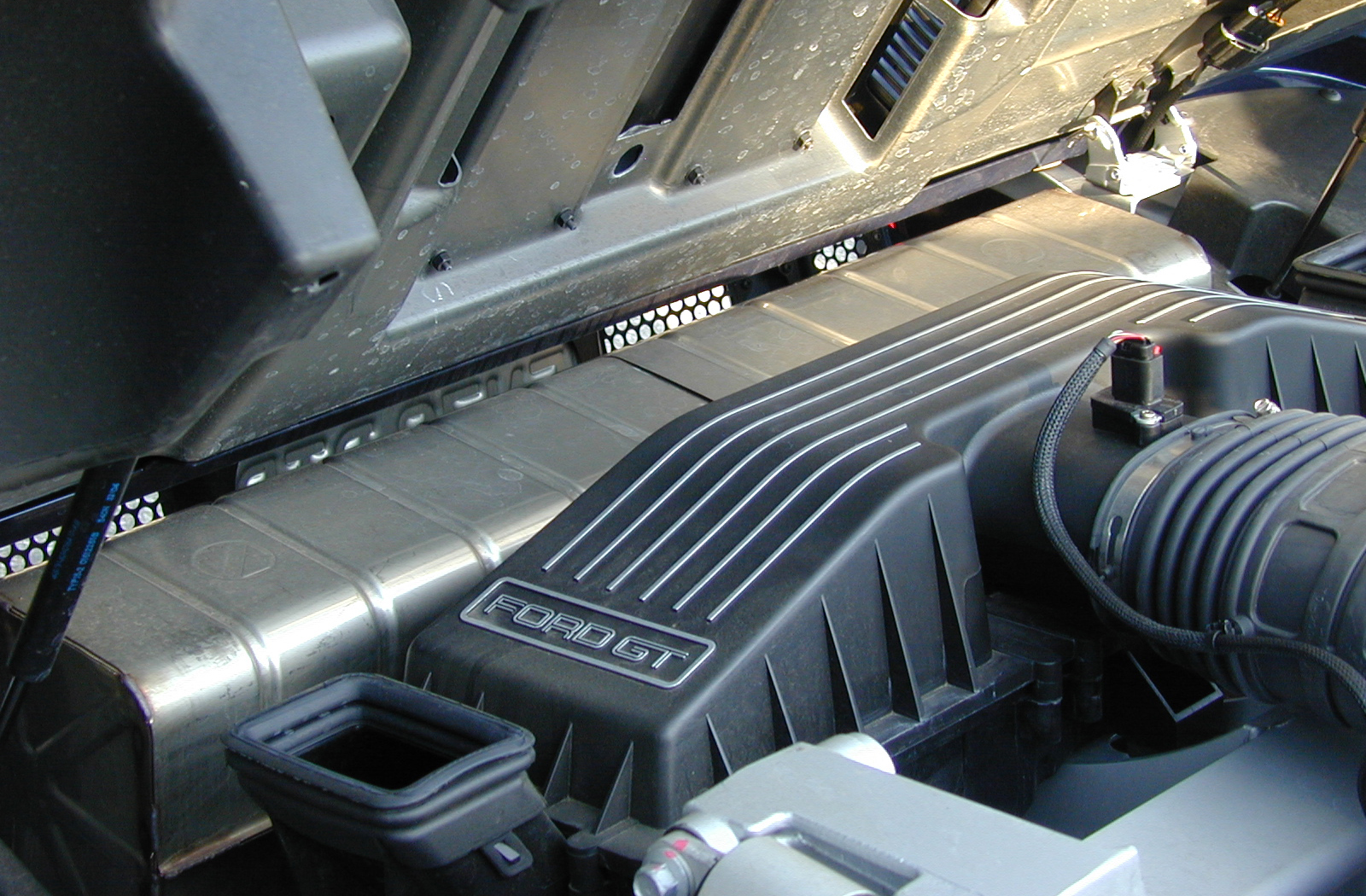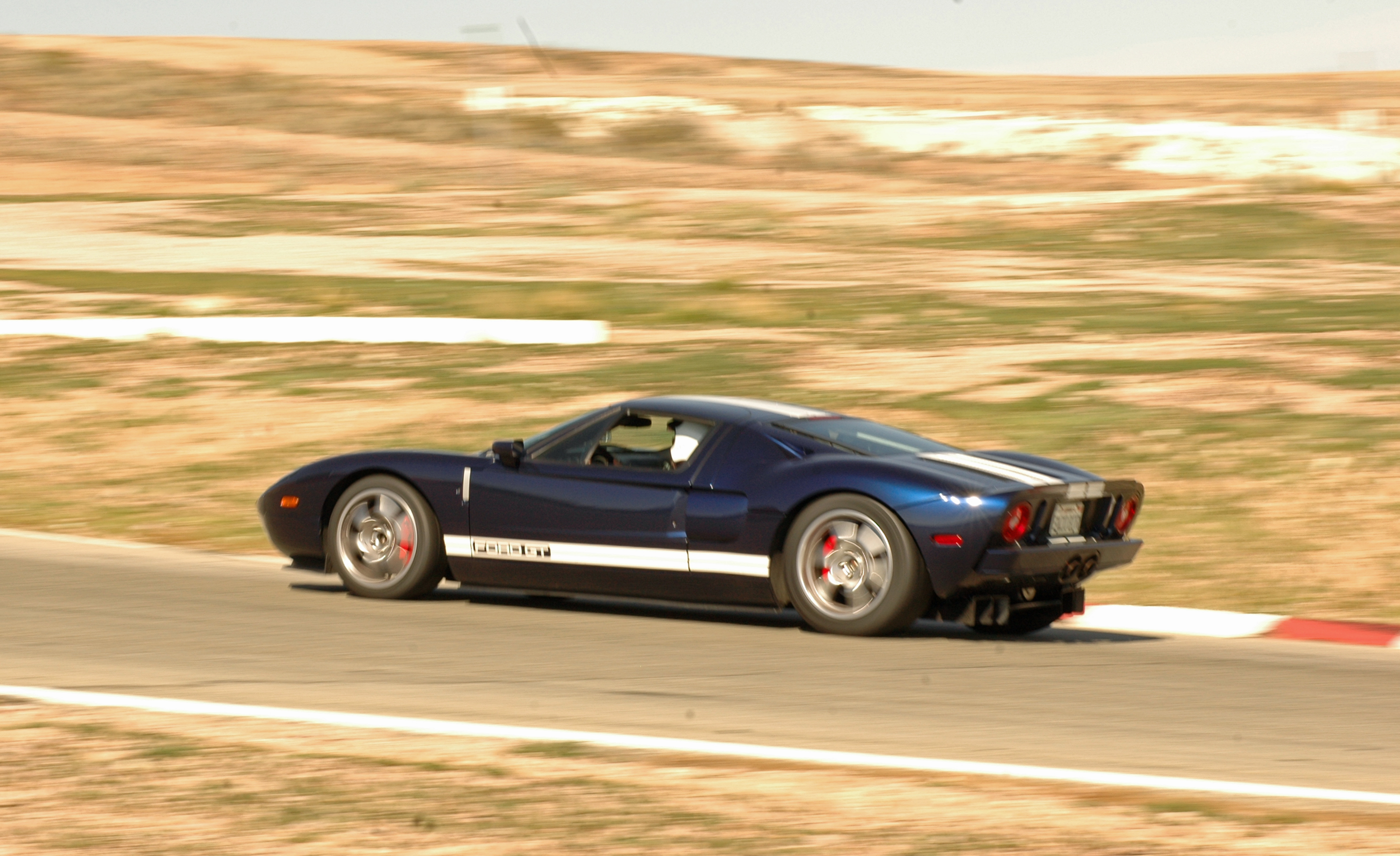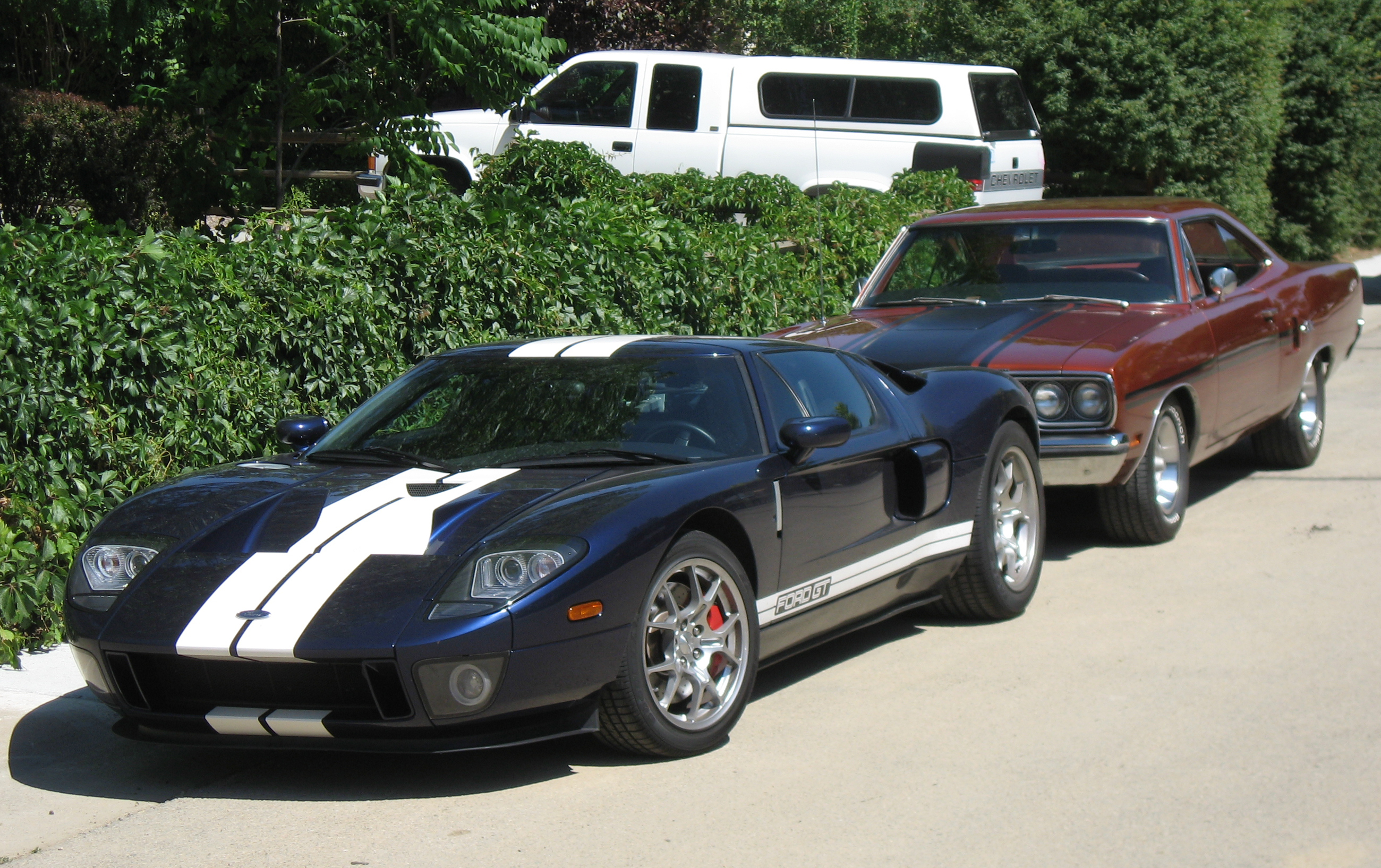In September of 2008 the Ford GT’s official long-term coverage ended with the odometer at just over 16,000 miles. This was 3 years after picking the car up with 7 miles on the odometer on August 23, 2005. A review of the car’s ownership experience, including dealer service, repair costs and lifetime fuel efficiency, confirmed the Ford GT as a powerful and reliable supercar with excellent resale value. (Note: I’ll continue adding posts about my 2005 Ford GT, along with increasingly regular posts about the new Ford GT I’ve been allocated, but this entry does a good job of wrapping up the first 3 years of my 2005 Ford GT ownership.)
September 2008: 2005 Ford GT Long-Term Wrap Up
At the 2002 North American International Auto Show, Ford Motor Company unveiled one of the most exciting concept cars in the automaker’s 99-year history. In both name and appearance, the Ford GT40 concept lived up to Ford’s hallowed racing legend of the 1960s, yet it seemed an unlikely candidate for production status from an automaker struggling to rebuild its aging product lineup. Eighteen months later, in June of 2003, three production-ready Ford GTs were shown off at the company’s centennial celebration in Dearborn, Michigan. Then, in August of 2005, I purchased a Ford GT and began chronicling my ownership experience.
Why I Bought It
The list of U.S.-built, V8-powered, midengine automobiles is pretty short. While the 2005 Ford GT’s starting price of $139,995 put it beyond the reach of most car shoppers, its unique status as a 100-percent American supercar piqued the interest of even the most discerning enthusiast. Engineered to surpass the performance of the Ferrari 360 Modena at a more affordable price, the Ford GT succeeded in outgunning the Prancing Horse in every head-to-head shoot-out between the two. It did the same to Ferrari’s 360 Modena successor, the F430.
But those shoot-outs focused almost entirely on performance numbers and lap times. With its 5.4-liter supercharged V8 rated at 550 horsepower and a curb weight of 3,500 pounds, the GT regularly posted 0-60 times under 4 seconds and recorded a certified top speed of 205 mph. Both numbers comfortably bested the Ferrari, but they told me little about what it was like to live with on a daily basis.
To answer these questions, I ordered a 2005 model in Midnight Blue. Four options were offered on the Ford GT, of which I specified three for mine: BBS forged-aluminum wheels ($3,500), painted brake calipers in red ($750) and painted racing stripes over the top of the car ($5,350). The fourth option, an upgraded McIntosh audio system for $2,100, was passed over to save money and weight (around 50 pounds). We also didn’t like the system’s large subwoofer. Mounted between the seats, the subwoofer blocked the view of the supercharger through the mid-lite glass behind the driver. Unfortunately, almost every 2005 Ford GT was ordered with this audio option despite these trade-offs (likely a measure to increase dealer profit, as most GTs were ordered by dealers, not final customers).
Durability
Expecting long-term durability from a pricey exotic car is typically akin to expecting long-term stability in the stock market. You might get lucky for a while, but eventually, the smooth ride comes to an end. One of Ford’s goals when engineering the GT was to make it as dependable and serviceable as any other Blue Oval product. Frequent – and expensive – dealer visits were off the table as far as the design team was concerned.
My three-year, 16,000-mile experience with the GT confirms Ford met this goal. In this time period I suffered no breakdowns and only once required the services of a flatbed tow truck after road debris skewered a rear tire. Initial mechanical issues consisted of adjusting the passenger door release when it was binding and adjusting the driver’s door latch to fix a rattle. Both services were done under warranty three months after purchase.
Within a few months of buying my GT reports of broken axle bolts and stranded GTs surfaced on the Ford GT Forum. The number and frequency of the reports suggested this was a widespread issue that would likely affect most, if not all, Ford GTs. Ford began an internal investigation and eventually offered to replace the original bolts under warranty (though the company never officially issued a recall on the parts).
Many GT owners were unhappy with the delay in Ford’s official response, which took approximately two years and finally came in early 2008. My GT never suffered axle bolt failure, but in August 2007 (with 10,000 miles on the odometer), I had the factory bolts replaced with aftermarket units from Accufab. Replacement cost was $450 for parts and labor. The original bolts showed signs of stress and likely would have failed at some point.
With the odometer reading 10,500 miles two items required warranty work during August 2007. First, after noticing an increasingly harsh ride I found a leaking rear shock on the driver side (this was the same tire that ran over the debris on the highway and vibrated violently before slowing down and pulling over…). While the dealer was replacing the shock, I had the service department address a TSB (technical service bulletin) for the brushed aluminum trim on each door panel. Originally held in place with doubled-sided tape, these panels were known to move around, rattle and even fall off (the latter usually in warm, dry climates like Arizona). At the time, my trim panels were loose but still attached. The dealer replaced the tape with plastic clips and (as with the shock replacement) charged me nothing.
Engine stalling at low speeds afflicted the 2005 Ford GT on two separate occasions. The car always restarted immediately after the engine died, and the dealer was unable to replicate the problem when I brought it in. Other owners had reported the same issue on the GT Forum, with a cracked fuel nozzle determined to be the cause. But the dealer pressure-tested my GT’s fuel system and said everything was fine. Both stalling instances occurred within a few weeks of each other, and the problem never returned. Bad gas? A temporarily confused ECU? I’ll probably never know.
No other mechanical or warranty issues occurred during my initial three-year ownership period, leaving only basic maintenance charges on our balance sheet. The Ford GT uses Mobil 1 synthetic oil that is good for 15,000 miles between changes, but I changed mine three times (about once a year) at a cost of $300-$350 per change. The rear tires were replaced at 7,000 miles after road debris punctured one of them; cost was $800.01 (parts and labor). Eighteen months later, at 13,200 miles, all four tires were replaced for $1,338.93. One air filter replacement at 12,500 miles cost us $60.
I also replaced the GT’s windshield at 15,917 miles. A sizable rock put a star in the glass directly in front of the driver at 7,090 miles. I initially tried to remove the chip with a $75 glass repair service. It worked relatively well, but additional chips in the glass had me ready for a new windshield near the end of the car’s test. The same low-profile shape that makes the GT so slippery at high speeds also subjects the windshield to regular road debris. Windshield cost was $800 but installation was a relatively painless $144.
It’s worth noting that my windshield was replaced without unbolting the front fenders, despite a suggestion from Ford’s service manual that they be removed. Other Ford GT owners have reported successful windshield replacements that didn’t require fender removal.
Total Body Repair Costs: $0
Total Routine Maintenance Costs (over 36 months): $1,002
Additional Maintenance Costs (over 36 months): $3,532.94
Warranty Repairs: 3
Non-Warranty Repairs: 1
Scheduled Dealer Visits: 2
Unscheduled Dealer Visits: 2
Days Out of Service: None
Breakdowns Stranding Driver: 1 (flat tire)
Performance and Fuel Economy
As performance cars go, the 2005 Ford GT is among the fastest and most powerful street cars ever produced. Instrumented testing had my long-term GT running from zero to 60 in 3.7 seconds and through the quarter-mile in 11.8 seconds at 124.4 mph. I realized during testing that there’s a very thin line between bog and spin in the GT. Any rpm below 3,500 and the rear tires just bite into the pavement while the engine bogs. Over 3,500 rpm and they’re likely to spin silently. It’s really a seat-of-the-pants test to get just a little wheelspin for the best launch.
The GT’s extremely tall 1st gear gets it to 60 mph without shifting, but the clutch also requires a delicate touch for smooth takeoffs under normal driving conditions. The clutch shows no sign of wear after 16,000 miles, despite getting overheated and slipping during a second round of acceleration testing to measure the effects of performance modifications. (After a complete cool-down, the clutch was fine.) At 10,000 miles a short-shift kit from Ford Racing was installed to reduce shift throws. This meant a small drop in leverage, but the GT’s shifter remains easy to operate and even more precise. Cost for the shifter, including parts and labor, was $1,000.
Other modifications included a smaller supercharger pulley and a computer reflash to increase maximum supercharger boost from 12 to 15 psi. This cost $2,000 and, when it was combined with the $3,100 (parts and labor) installation of a Borla free-flow muffler from Ford Racing, my Ford GT likely has around 700 hp at the rear wheels. My car wasn’t put on a dyno, but several other owners with identical modifications have been tested and come in at over 600 hp at the rear wheels. After installing these parts, my car ran zero to 60 mph in 3.5 seconds and through the quarter-mile in 11.6 seconds at 126.3 mph.
All modifications were performed by The GT Guy, a company specializing in the Ford GT and operated by two former Roush Performance employees who worked on the GT during the car’s development. These guys know the car from top to bottom and can perform just about any service. If you’re out of warranty or want to modify your GT, they come highly recommended.
Happily, these modifications had no discernible impact on fuel economy. After its first 10,000 miles, the GT was averaging 16.4 mpg. An additional 6,000 miles were accumulated after the engine modifications, and fuel economy didn’t change much, giving the GT an average of 17 mpg after 3 years.
As a highway cruiser the 2005 Ford GT suffers from noticeable road noise coming off the Goodyear Eagle F1 tires. It’s not atrocious, but I measured 74.5 decibels in the cabin at 70 mph. For comparison, a Porsche 911 GT2 generates a nearly identical 73.5 dBA, while a 2007 Lexus LS 460 generates 62.5 dBA at 70 mph. The Ford’s number went up to 77.0 dBA after we installed the Ford Racing muffler.
Beyond my public road travels I had multiple opportunities to exercise the Ford GT at a racetrack. Most of these experiences involved a few hot laps on the factory tires between other official track events. But a day at the Ford GT School allowed for several track sessions and included instruction from the Ford GT’s lead engineer, Neil Hannemann. With Hoosier slicks mounted in place of the factory Goodyear rubber, the GT reeled off impressive times and touched on 140 mph along Willow’s front straight.
Best Fuel Economy: 26.2 mpg
Worst Fuel Economy: 13.1 mpg
Average Fuel Economy: 17 mpg
Retained Value
Some exotic car shoppers are foolish enough to consider their purchase an investment, but most recognize automobiles for the horrid investments they are. That said, the Ford GT has performed remarkably well in terms of depreciation. The exotic car market is always a bit suspect because of the low number of vehicles that change hands and the often unique nature of any given transaction.
In September 2008 a 2005 Ford GT with 16,000 miles is listed at $114,227 for private party sale (dealer retail is listed at $120,964) on various internet sites. eBay has Ford GT’s listed between $120,000 and $210,000. My test car’s Midnight Blue color is considered rare and desirable, but the mileage is high for this kind of car. I’d guess a real-world value around $135,000-$145,000.
Using that figure gives the GT just over 25 percent depreciation after three years, which is extremely low by any vehicle standards.
Market Value at service end: $114,227
Depreciation: $38,718 or 25.3 percent of original paid price ($152,945) after 3 years
Final Odometer Reading: 16,096
Summing Up
Few Ford GT owners will put 16,000 miles on their car in 3 years – if ever. The majority of these vehicles will spend the majority of their lives under a car cover in a heated garage, likely surrounded by several other high-priced toys. After enjoying my 2005 Ford GT in a variety of circumstances, ranging from long-distance road trips to hard-driving track days, I can testify to the tragedy of this situation.
Designed to beat Ferraris, engineered to F-150 durability standards and 100 percent American in design and engineering, the Ford GT is an enigma in the exotic car world. It’s a dependable and fully functional automobile that happens to be capable of 200-plus mph and 16-plus mpg. If you own one, please drive it. And if you’re looking for an exotic you can truly enjoy on a weekly, if not daily, basis, look no further.

